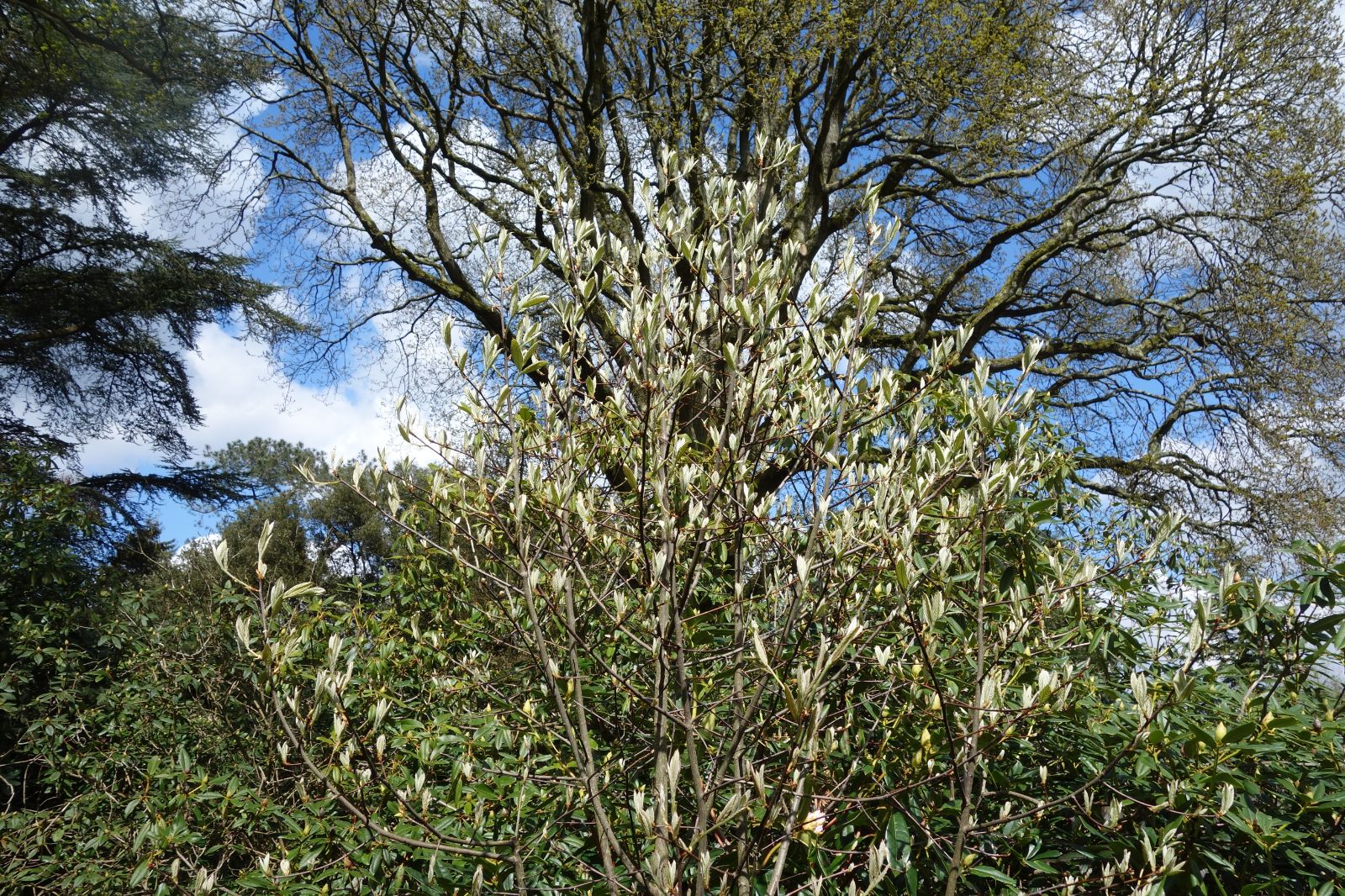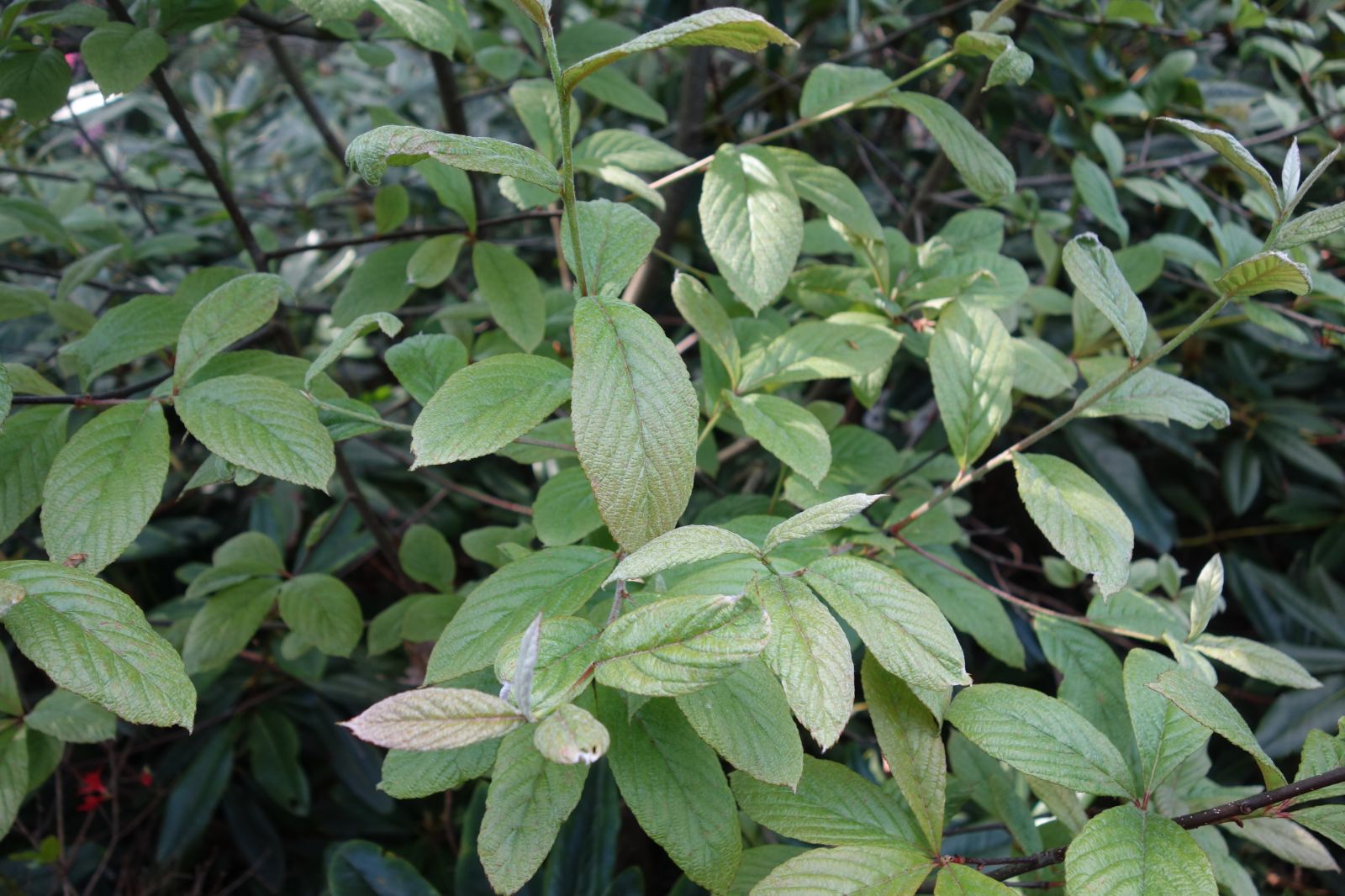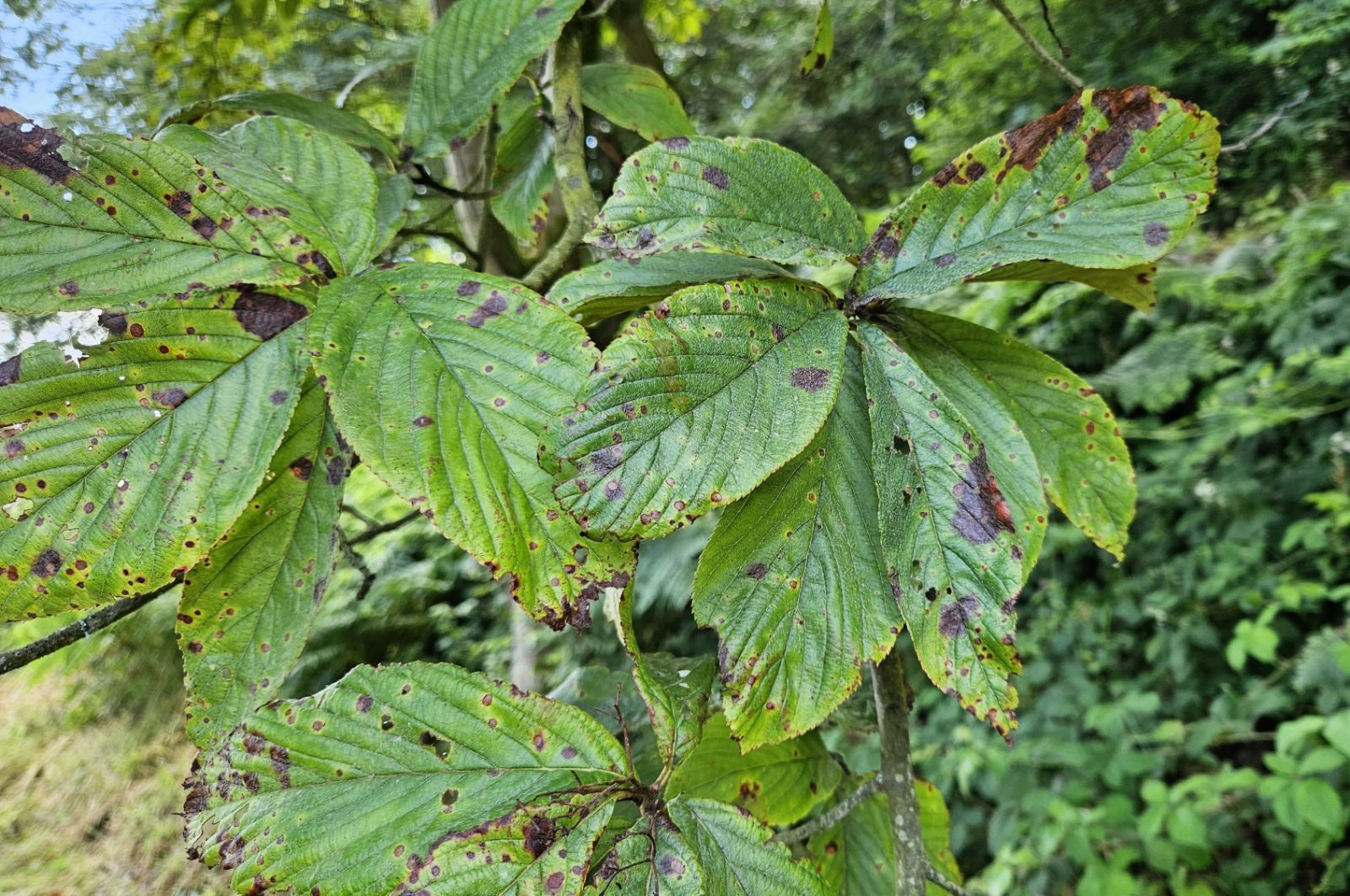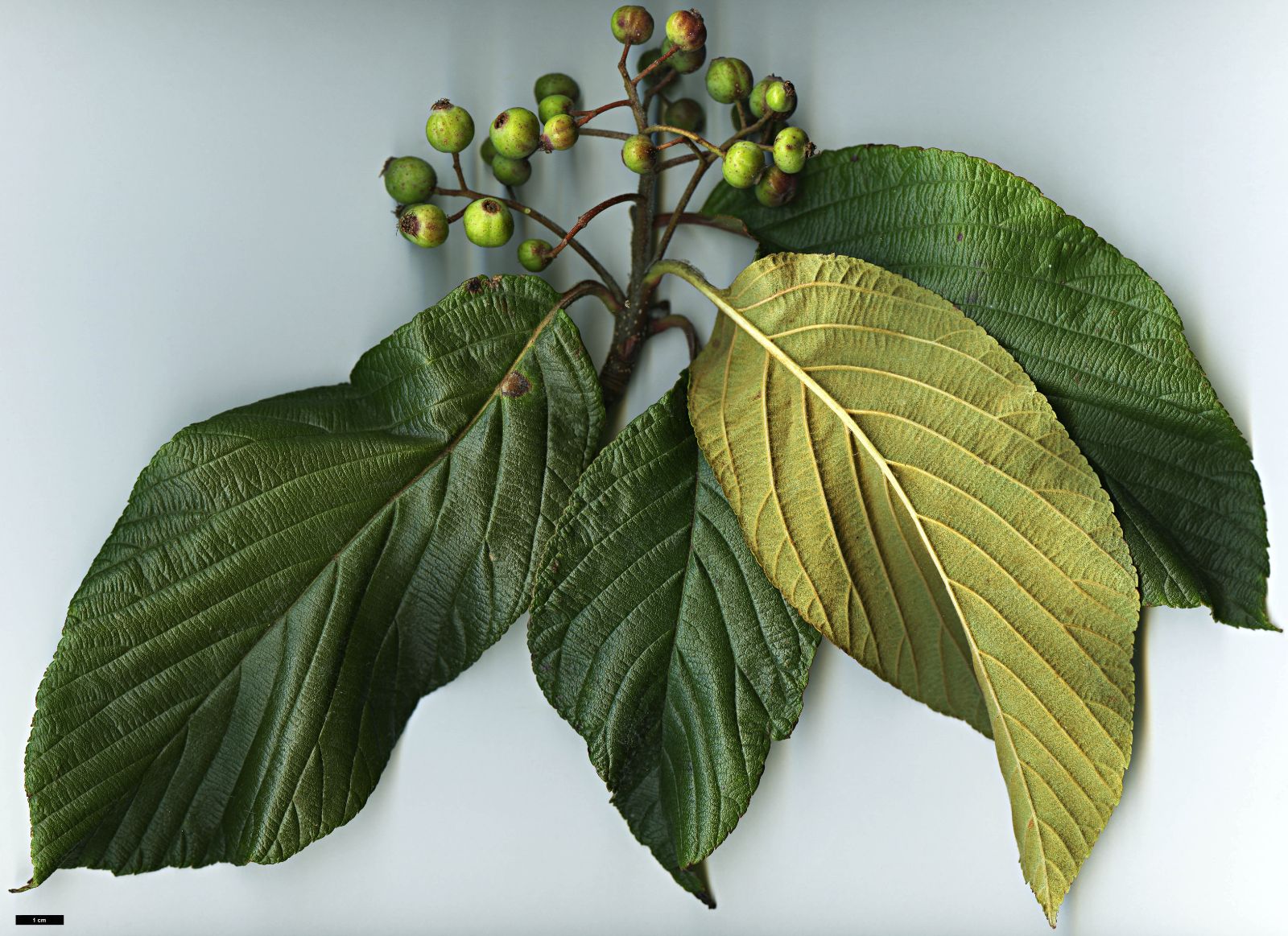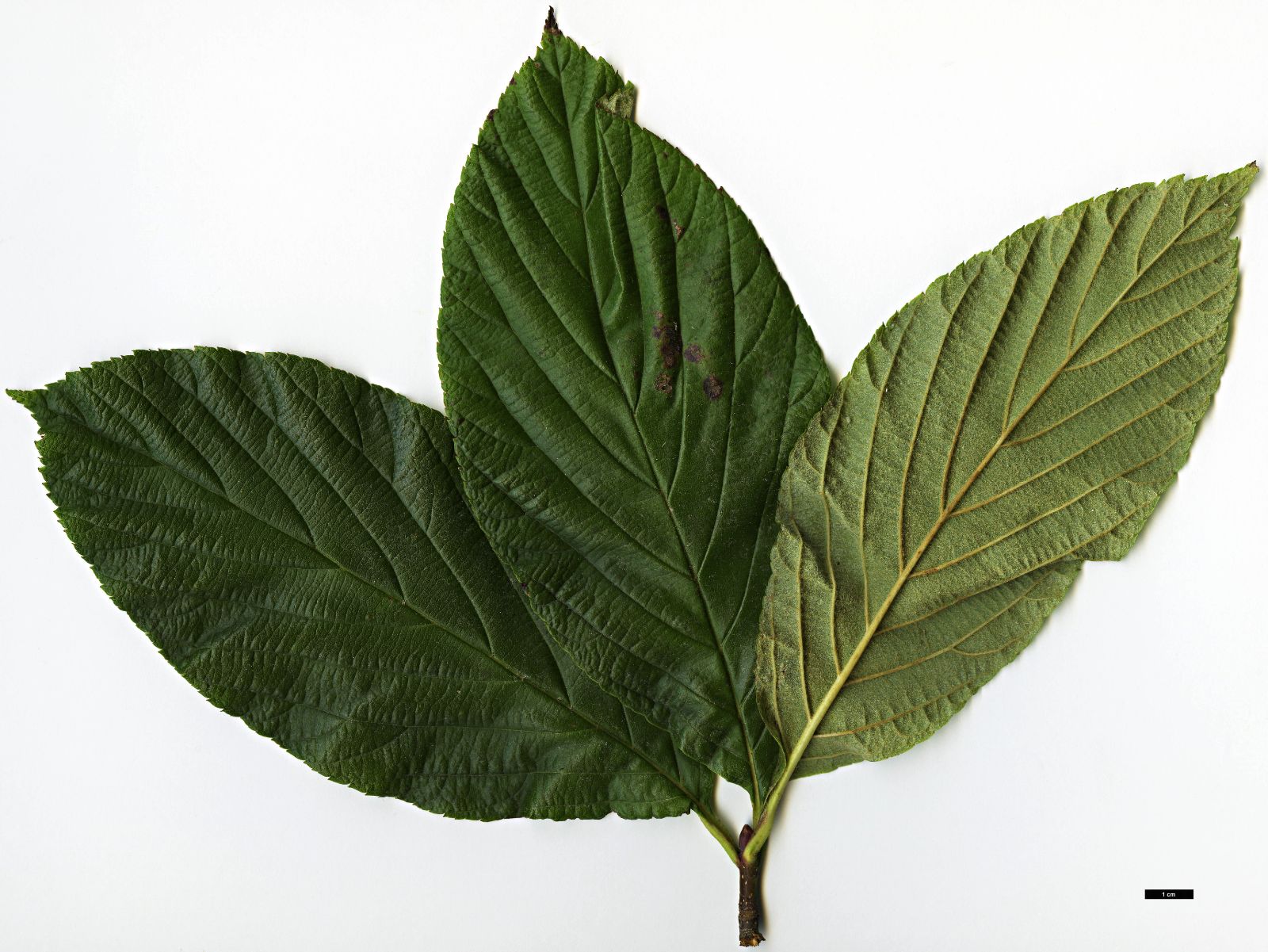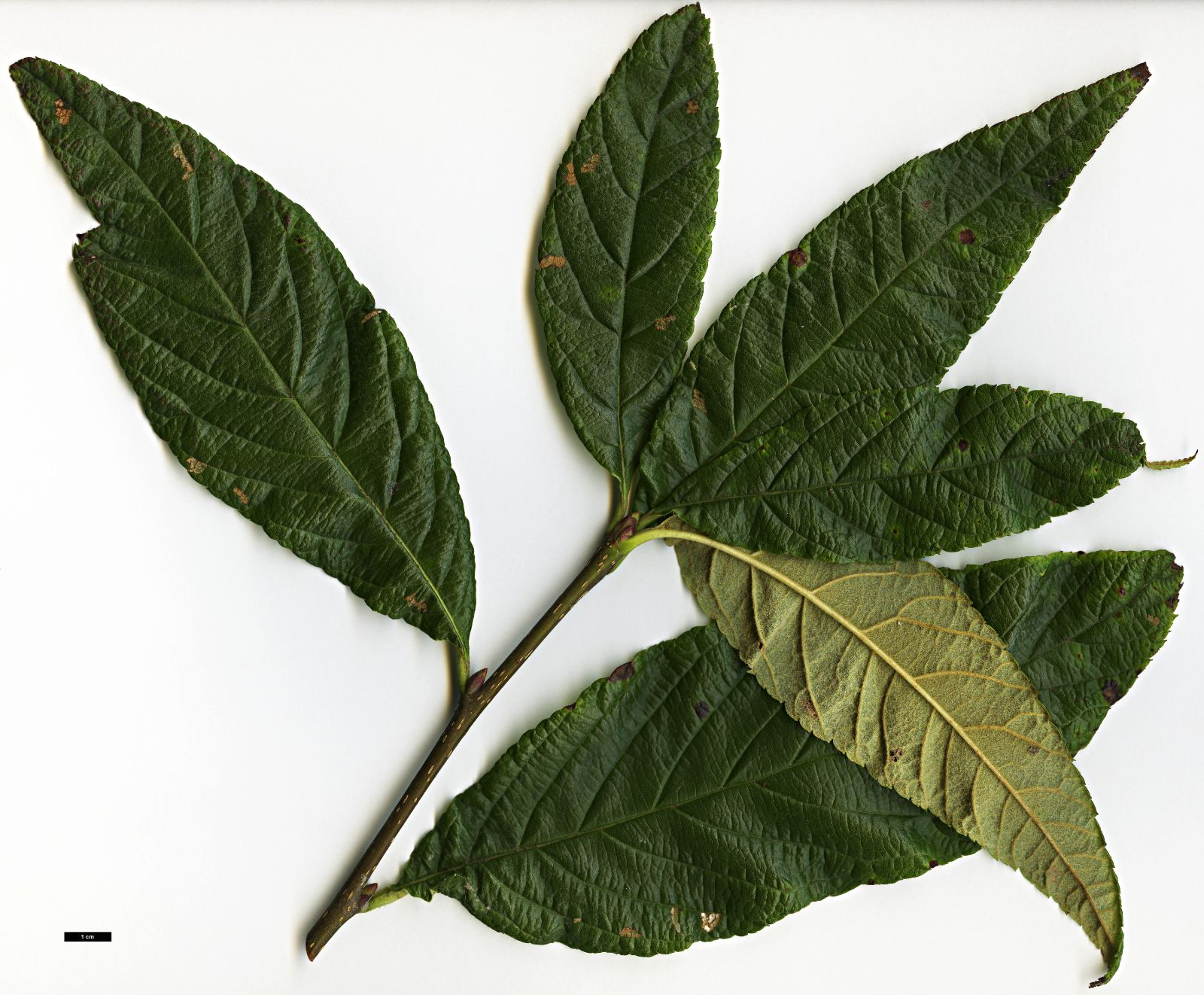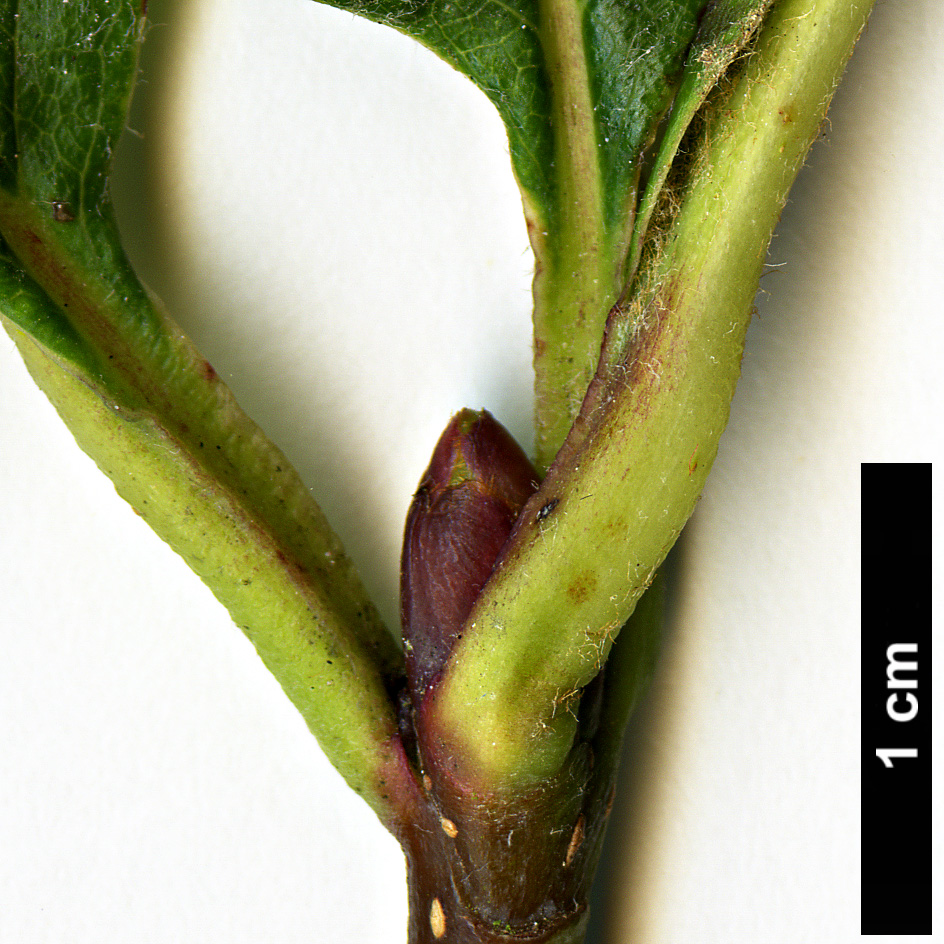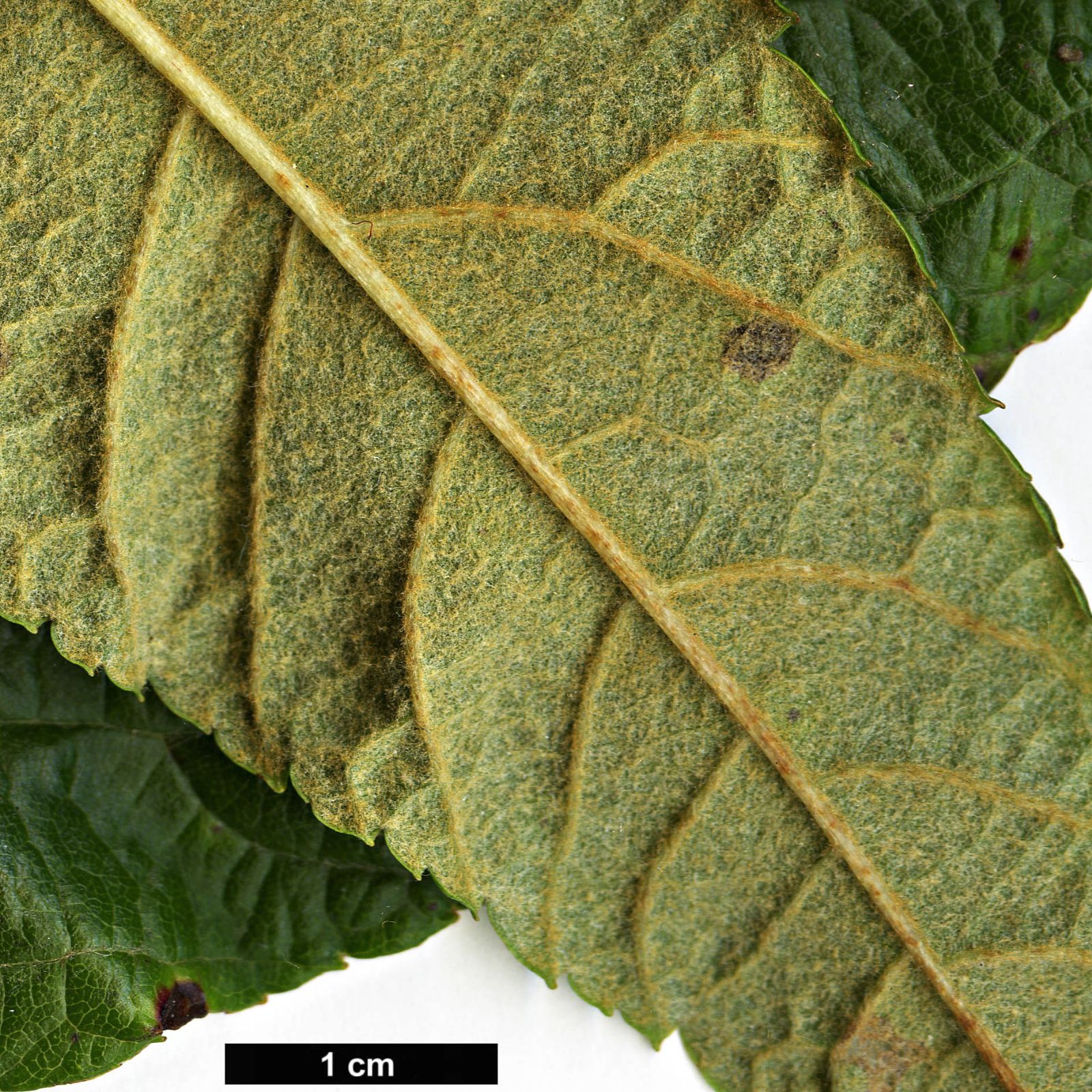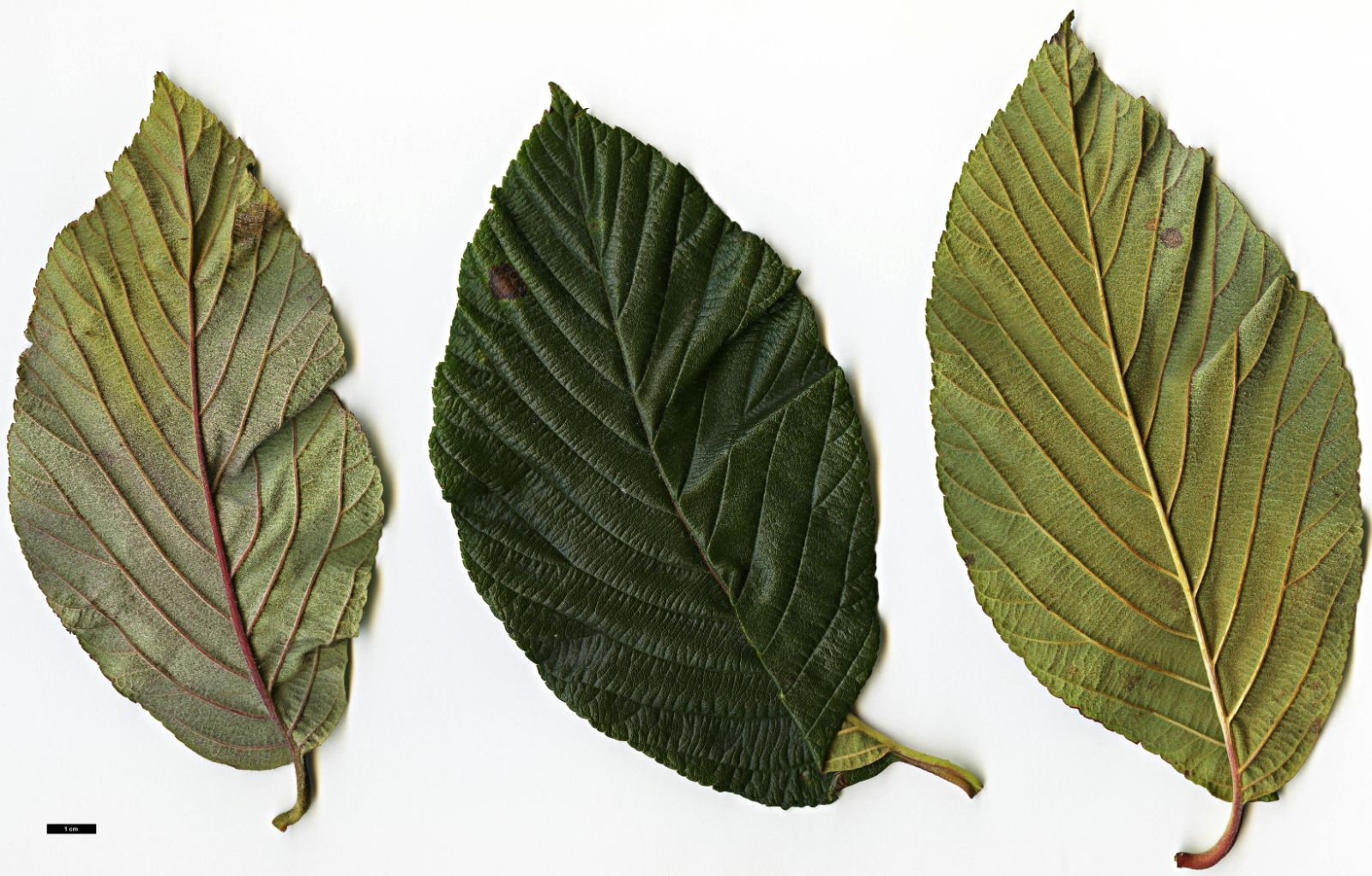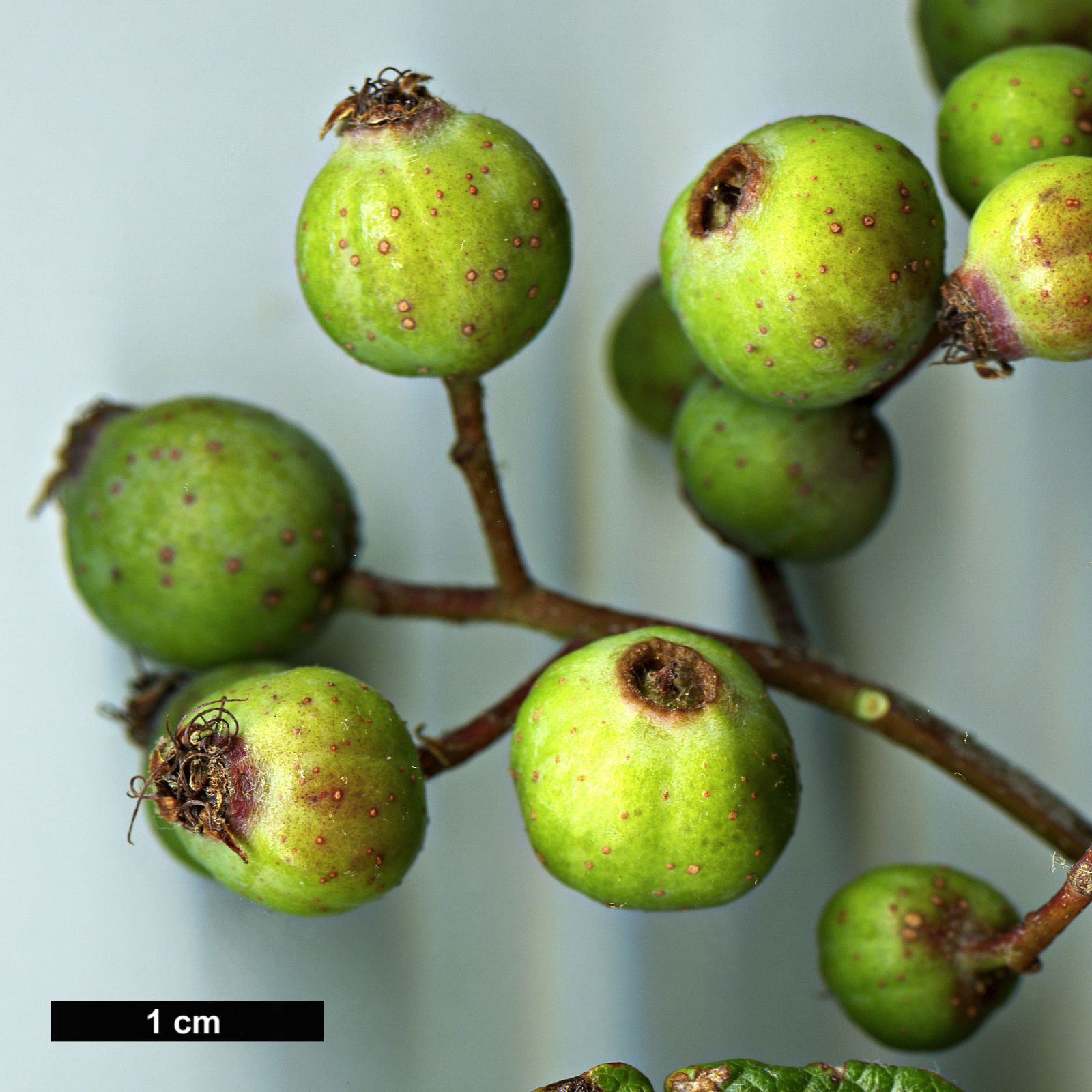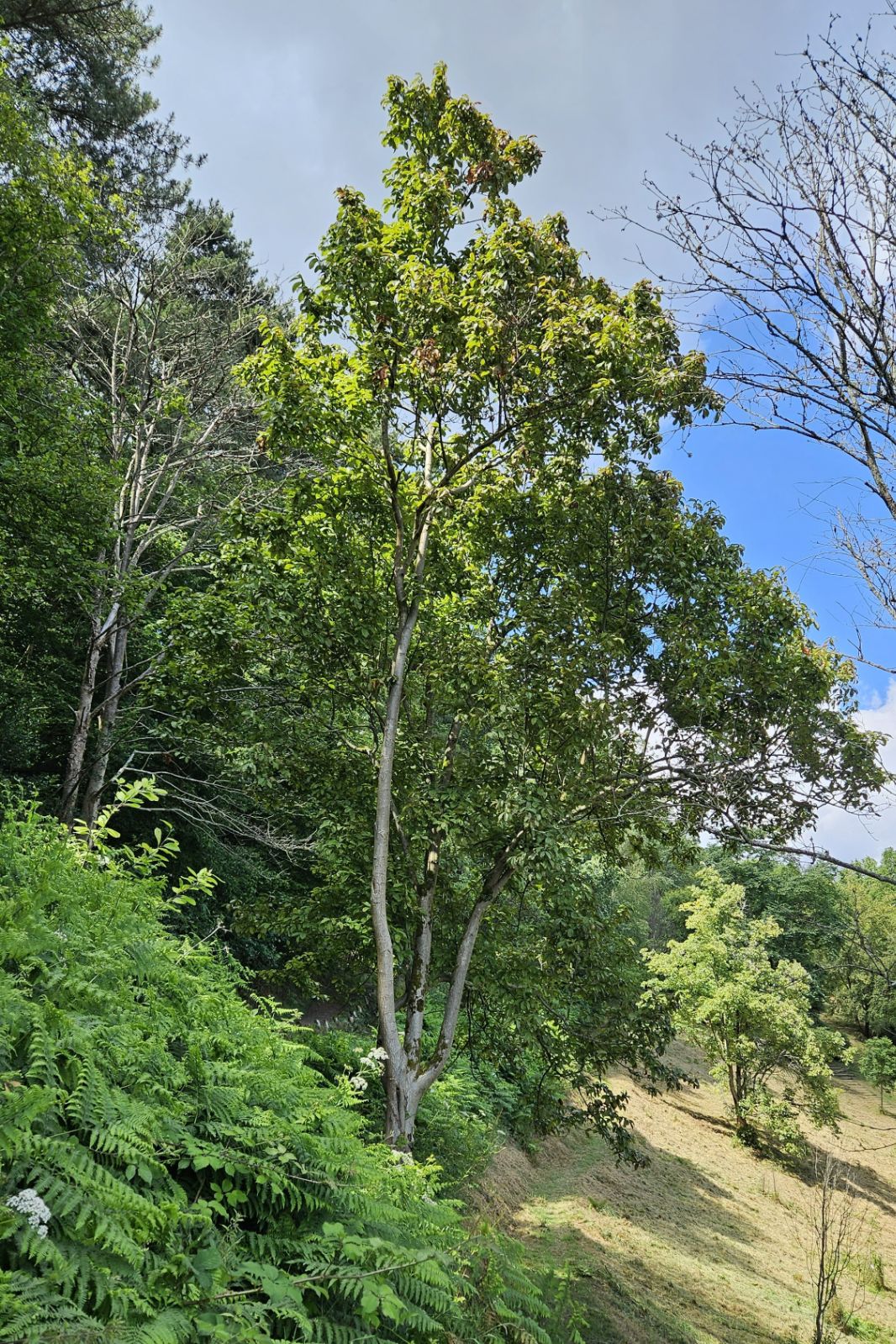Thomsonaria epidendron
Credits
Article from Bean's Trees and Shrubs Hardy in the British Isles
Recommended citation
'Thomsonaria epidendron' from the website Trees and Shrubs Online (treesandshrubsonline.
Genus
Synonyms
- Aria epidendron (Hand.-Mazz.) H.Ohashi & Iketani
- Micromeles epidendron (Hand.-Mazz.) Kovanda & Challice
- Pyrus epidendron (Hand.-Mazz.) M.F.Fay & Christenh.
- Sorbus epidendron Hand.-Mazz.
Editorial Note
The text below is that of Bean (Bean 1981) who discussed this taxon under the name Sorbus epidendron. We have created this hybrid article – Bean’s text under the correct modern name, with appropriate synonymy – whilst we await sponsorship to enable a full revision of this genus to be written. We are re-organising the Sorbus sensu lato articles in this way to enable a new revision of Sorbus sensu stricto to commence in 2023, and to bring the nomenclature of this complex group of plants up to date in line with modern treatments.
TC, August 2023.
A tree up to 50 ft high in the wild, but said to be sometimes an epiphytic shrub (whence the epithet epidendron, living on trees); branchlets at first hairy, soon glabrous; winter-buds ovoid, about 1⁄4 in. or slightly more long, glabrous. Leaves narrowly obovate to elliptic, up to 6 or 7 in. long on wild plants, rounded or abruptly acuminate at the apex, cuneate to narrowly so at the base, glabrous above, coated more or less densely beneath when young with rusty or sometimes whitish hairs, most of which are soon shed but a few persisting, especially on the veins, finely toothed almost to the base; lateral veins prominent beneath, in mostly ten to twelve pairs, the lowermost sending off numerous branches to the teeth; petiole varying on the same shoot from almost absent to about 1⁄2 in. long (but much longer in some herbarium specimens accepted as this species by Dr Yü). Inflorescence with a definite central axis, sometimes dense and apparently corymbose, sometimes taking the form of a conical panicle as long or even longer than wide; branches of inflorescence clad at flowering-time with rusty or fawn-coloured wool. Flowers white, about 1⁄4 in. across. Petals hairy on the inside. Receptacle constricted at the apex, its free part and the sepals soon deciduous. Styles two or three, free, glabrous like the top of the receptacle. Fruits slightly lenticellate, globose, not seen in the ripe state on cultivated plants but about 1⁄4 in. wide on wild trees, probably not colouring.
A native of S.W. China and north Burma; discovered by the Austrian botanist Handel-Mazzetti in 1915 and described by him. In his description he also cited two specimens collected by Forrest, who introduced this species in 1924–5; seed was also distributed after his death under number F.29021, from his 1930–1 collections. This species is very rare in cultivation. There are two shrubby examples in the Winkworth Arboretum, of unrecorded provenance, planted in 1952 and probably bought from Messrs Hillier, who for some years propagated a plant from Forrest’s 1924–5 introduction. The healthier of the two is a fastigiate, slenderly branched bush about 20 ft high (1979), which bears inconspicuous flowers and fruits in some years. The young foliage is coppertinted; the leaves persist until late autumn and sometimes turn pink or apricot before falling. Evidently from a different Forrest sending is a tree in the Edinburgh Botanic Garden planted in 1926 and measuring 20 × 1 ft (1967). This has much paler hairs than in the Winkworth plant or in any wild-collected specimen examined, and less prominent leaf-ribs, but there is no other species with which it agrees better. The flowers, at least in some years, are borne in quite showy lax panicles about 3 in. long and 4 in. wide.

